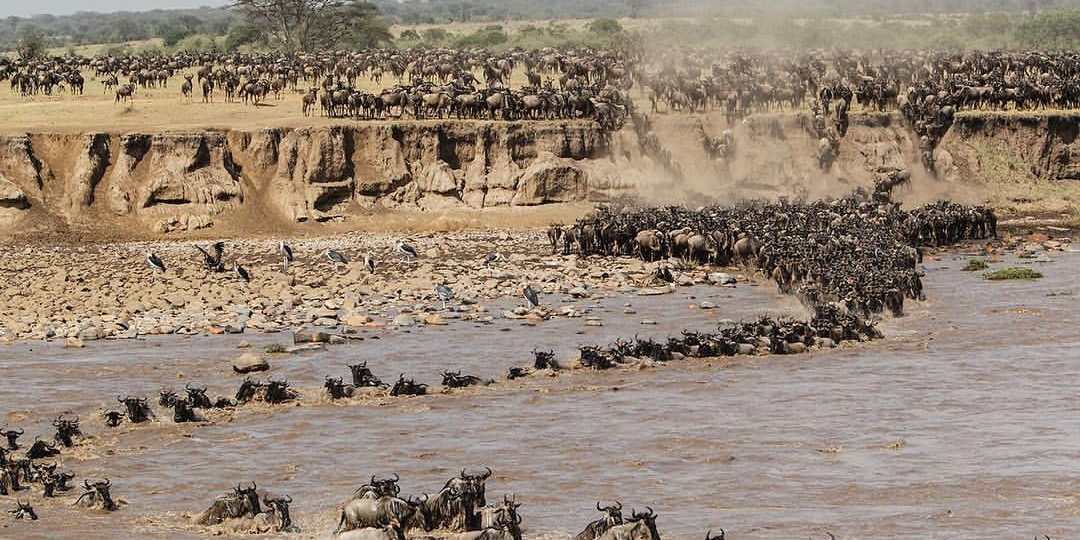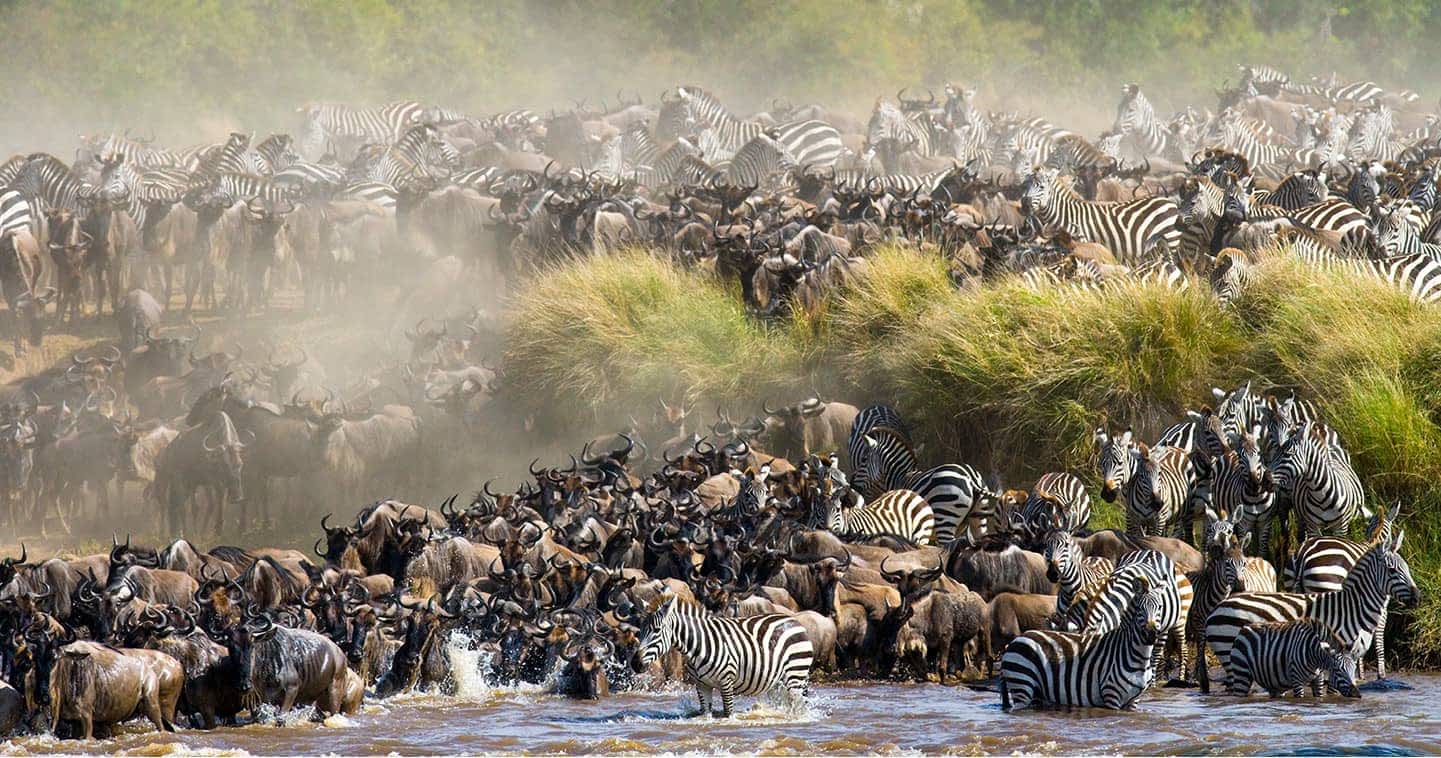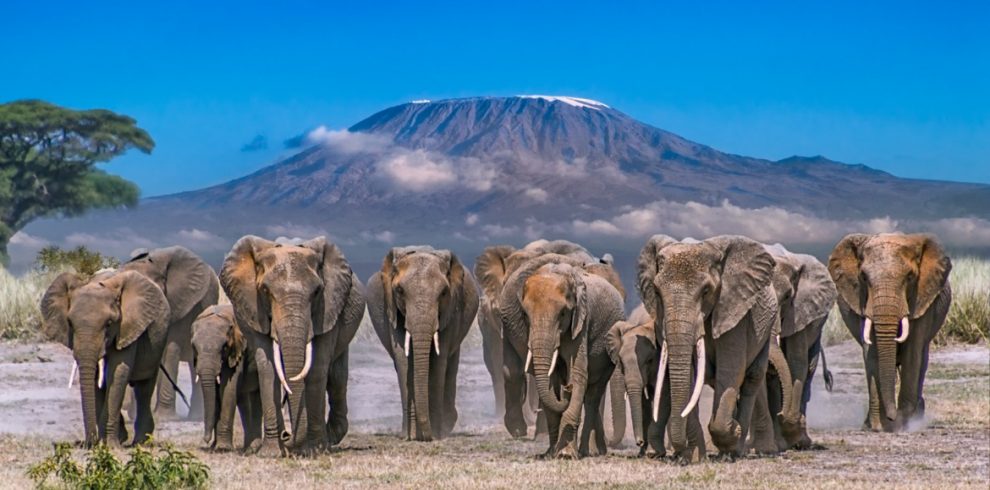
The Annual Great Wildebeest Migration in Kenya 2024
The Annual Great Wildebeest Migration in Kenya 2024 is one of the most astonishing spectacles of the natural world. Taking place within the Serengeti-Mara ecosystem, it showcases the relentless journey of millions of wildebeests, accompanied by zebras and gazelles, as they traverse vast landscapes in search of fresh grazing pastures. This epic migration isn’t just about survival; it’s about life, death, and the intricate balance of nature. The migration is an awe-inspiring example of the perpetual cycle of life and an event that’s both thrilling and humbling to witness.

The Starting Point – Serengeti’s Southern Grasslands
The migration’s journey begins in the southern grasslands of the Serengeti in Tanzania. It’s here, in the calving season, that the wildebeests give birth to their young. The Southern Serengeti serves as the primary nursery for these ungulates, where the newborns take their first steps in the world. This period, marked by prolific calving, is both a spectacle of life and a bonanza for predators. Hungry lions, cheetahs, and hyenas patrol the area, waiting for their opportunity to seize a meal amidst the chaos.
The Mara River Crossing – A High-Stakes Gamble
Perhaps the most iconic phase of the migration is the Mara River crossing. As the wildebeests, zebras, and gazelles reach the Mara River, they must face a perilous choice. They’re driven to cross the crocodile-infested waters, with countless reptilian jaws lurking beneath the surface. The chaos and drama of this event are unlike anything else in the animal kingdom. It’s a high-stakes gamble where a single misstep can lead to tragedy. However, it’s also a testimony to the indomitable spirit of these creatures as they overcome challenges to continue their journey.
The Maasai Mara – The Kenyan Side of the Story
Once they’ve successfully navigated the Mara River, the wildebeests arrive in the Maasai Mara, the Kenyan portion of the ecosystem. The Mara is characterized by its stunning topography, with rolling savannas, rocky outcrops, and meandering rivers. This landscape provides a breathtaking backdrop to the migration. In the Maasai Mara, the wildebeests find respite and an abundance of fresh grazing. Additionally, the Mara is home to a diverse range of wildlife beyond the migration, making it a year-round safari destination.
The Importance of the Migration – Ecological Insights
The Great Wildebeest Migration isn’t just a visual spectacle; it plays a pivotal ecological role. Wildebeests act as “ecosystem engineers,” shaping the landscape as they graze. They’re followed by predators, scavengers, and birds, creating a complex food chain dynamic. The migration’s constant movement helps prevent overgrazing, which can lead to habitat degradation. Moreover, it supports local economies by drawing tourists and researchers, contributing to conservation efforts.
Planning Your 2024 Migration Adventure
If you’re planning to witness this incredible event in 2024, timing is crucial. The peak of the migration occurs during the dry season from July to October. To make the most of your experience, consider various accommodation options, from rustic tented camps to luxury lodges. For a unique perspective, hot air balloon safaris offer a bird’s-eye view of the wildebeests on the move, a truly unforgettable experience.
Popular safaris in Kenya include:
Beyond the Wildebeest – Exploring Kenya’s Diverse Wildlife
While the wildebeest migration is the centerpiece, Kenya offers much more in terms of wildlife experiences. The Big Five (lions, leopards, elephants, buffalos, and rhinos) can be spotted in various national parks. Bird watchers will be delighted by the country’s diverse avian population. For a deeper cultural connection, consider meeting the Maasai people, who have a deep-rooted connection to the land and its wildlife.

Responsible Tourism – Ensuring the Migration’s Future
With the influx of visitors eager to witness the migration, responsible tourism is vital. Sustainable practices, such as ethical wildlife viewing and environmentally friendly accommodations, are essential to protect the environment. Engaging with local communities through tourism also supports conservation efforts. Travelers have a crucial role in ensuring the migration’s continued existence.
Conclusion – Witnessing the Wonder
In conclusion, witnessing the Great Wildebeest Migration in Kenya in 2024 is a journey of a lifetime. It’s a testament to the beauty and complexity of the natural world. The migration reminds us of our shared connection to the environment and the importance of conservation. The incredible moments you’ll witness during the migration are not just about the wildebeests; they’re about understanding the intricate dance of life in the Serengeti-Mara ecosystem. Start planning your adventure and get ready to be part of this captivating journey in 2024
Other Kenya safaris include:






